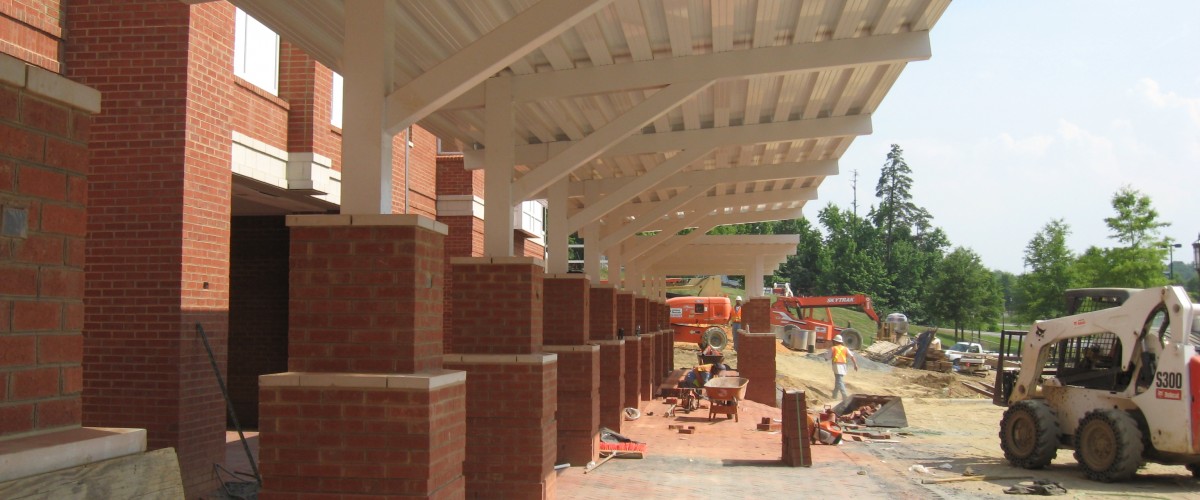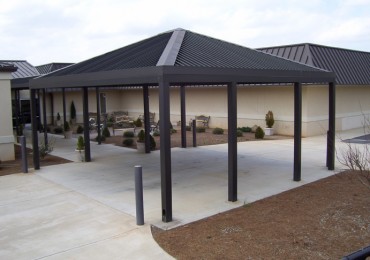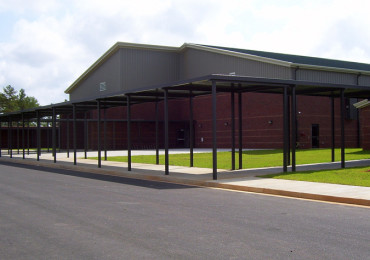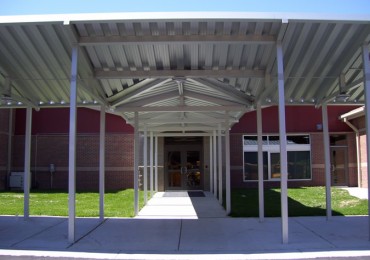Wondering why your aluminum canopy system provider wants to use a blockout footing instead of the tried-and-true baseplate? By the end of this article, you will understand the implications each of these choices will have on your canopy, and why a blockout footing is the preferred foundation for aluminum.
Steel canopies tend to use baseplate foundations because they employ the raw strength and pliability of steel to the greatest effect.
Baseplate Footings: Reduced Effect, Hazardous and Excess Cost
The foundation is an extremely important piece of a canopy system because it reinforces the failure point of the structure. Whether it is well-designed or poorly designed, a footing will accomplish four primary purposes:
- Counteract wind uplift
- Spread out downward pressure
- Counteract overturning moment (ie. strong horizontal wind)
- Resistance to seismic shifts
A baseplate footing is essentially a plate that is welded onto the bottom of the columns and bolted on top of the concrete foundation. Steel canopy systems that use baseplates encounter a couple of minor disadvantages, including:
- Extra cost associated with installation: the welding and bolting process incurs cost and complicity
- The plate typically sticks out above the walkway, creating a tripping hazard, particularly for elderly pedestrians and children.
The bigger problem is that the welding process greatly reduces the strength of aluminum (over 50%). So in a welded baseplate, the failure point of the canopy is precisely where the aluminum is weakest. Structural integrity suffers.
Blockout Footings for Aluminum Canopy Systems: Process
When using a blockout footing, the sidewalk and foundation are typically both poured at the same time. We have the General Contractor insert a tapered Styrofoam cube before they pour. Later, when we show up on site, we remove the Styrofoam, set our columns in the void, and backfill with concrete. A rigid metal bar is inserted through the column into the concrete – thus connecting the column to the concrete.
The tapered shape of the blockout locks our backpour into the main footing, creating an extremely solid foundation for the canopy system. The failure point is directly atop the concrete slab, and at that point the system has the full strength of the column to support over-turning moment, high wind uplift, etc.
A blockout footing has 100% strength at the failure point; a baseplate has about 40% strength at the failure point.
Final Considerations for Blockout Footings: Oxidation and Ground Frost
Steel canopies do not use blockout foundations due to the fear that the water in the concrete will corrode the steel. Aluminum does not corrode, but it does oxidize. That’s why we use a bituminous coating, which protects aluminum from oxidation within the concrete foundation.
Polyester and kynar paints both insulate the material from moisture. Anodized aluminum is covered with acrylic for protection.
Ground frost is another concern, particularly in the northern United States where the frost line can exceed 3’. If the foundation does not plunge deeper than the frost line, ground water will freeze below the foundation, expand, and literally push the canopy out of the ground.
In Georgia, the frost line is only 8 inches but we are always sure to plunge the foundation below the appropriate depth.
Takeaways for Contractors and Customers
Blockout footings are simpler and more effective than baseplates. The simplistic design entails less expense on our part, which carries over to our customers. For aluminum, blockouts work better than baseplates.
There are some exceptions. When a canopy is mounted on top of a roof, or along a bridge, blockout foundations are impossible. In these cases, design the baseplate connections to keep the structure safe and stable.




